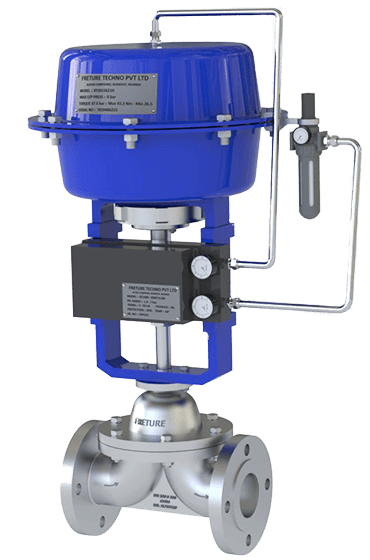Diaphragm control valves are essential components in fluid regulation systems, providing precise control over flow, pressure, and isolation. These valves use a flexible diaphragm to separate the actuator from the process fluid, ensuring leak-proof operation and compatibility with corrosive and high-purity applications.
Working Principle
Diaphragm control valves operate by using a flexible membrane (diaphragm) to regulate the flow of liquid or gas through a pipeline. When pressure is applied to the actuator, the diaphragm moves downward to restrict flow, and when the pressure is released, the diaphragm returns to its original position, allowing fluid to pass freely.
This movement ensures precise control over fluid pressure, volume, and flow rate, making diaphragm valves suitable for applications that require high levels of accuracy. These valves can be manually operated or automated with pneumatic or electric actuators, depending on the requirements of the system.
Additionally, diaphragm control valves are designed to handle varying pressure levels and aggressive fluids, making them suitable for industries where sterile and leak-proof operation is necessary. Their simplicity in design and low risk of contamination make them a preferred choice for pharmaceutical, chemical, and food processing applications.
Key Components
Diaphragm: The flexible sealing element that moves up and down to regulate fluid flow.
Valve Body: Houses the flow path and determines flow capacity.
Actuator: Controls diaphragm movement and can be manual, pneumatic, or electric.
Bonnet: Protects the actuator and diaphragm from external damage.
Stem: Connects the actuator to the diaphragm, ensuring proper movement and sealing.
Modern diaphragm valves also integrate smart actuation systems, enabling remote control and automation. These advancements allow industries to optimize process efficiency, reduce manual intervention, and improve overall plant performance.
Types of Actuators
Manual Actuators: Operated by handwheel or lever, suitable for simple on/off control.
Pneumatic Actuators: Use air pressure for precise automation.
Electric Actuators: Provide automated operation using electrical signals.
Advantages of Diaphragm Control Valves
Superior Leak-Tight Performance: The diaphragm creates a tight seal, preventing leaks even in high-pressure applications.
Minimal Maintenance Requirements: Fewer moving parts mean reduced wear and tear, leading to lower maintenance costs.
Corrosion and Chemical Resistance: Diaphragms made from PTFE or EPDM withstand aggressive fluids.
Hygienic and Sterile Processing: Ideal for pharmaceutical and food-grade applications due to their contamination-free operation.
Extended Lifespan: Due to their robust design and durable materials, diaphragm valves offer a longer service life compared to other valve types.
Versatility in Application: These valves can be found in a wide range of industries, from biopharmaceutical manufacturing to semiconductor processing, proving their adaptability.

No comments:
Post a Comment